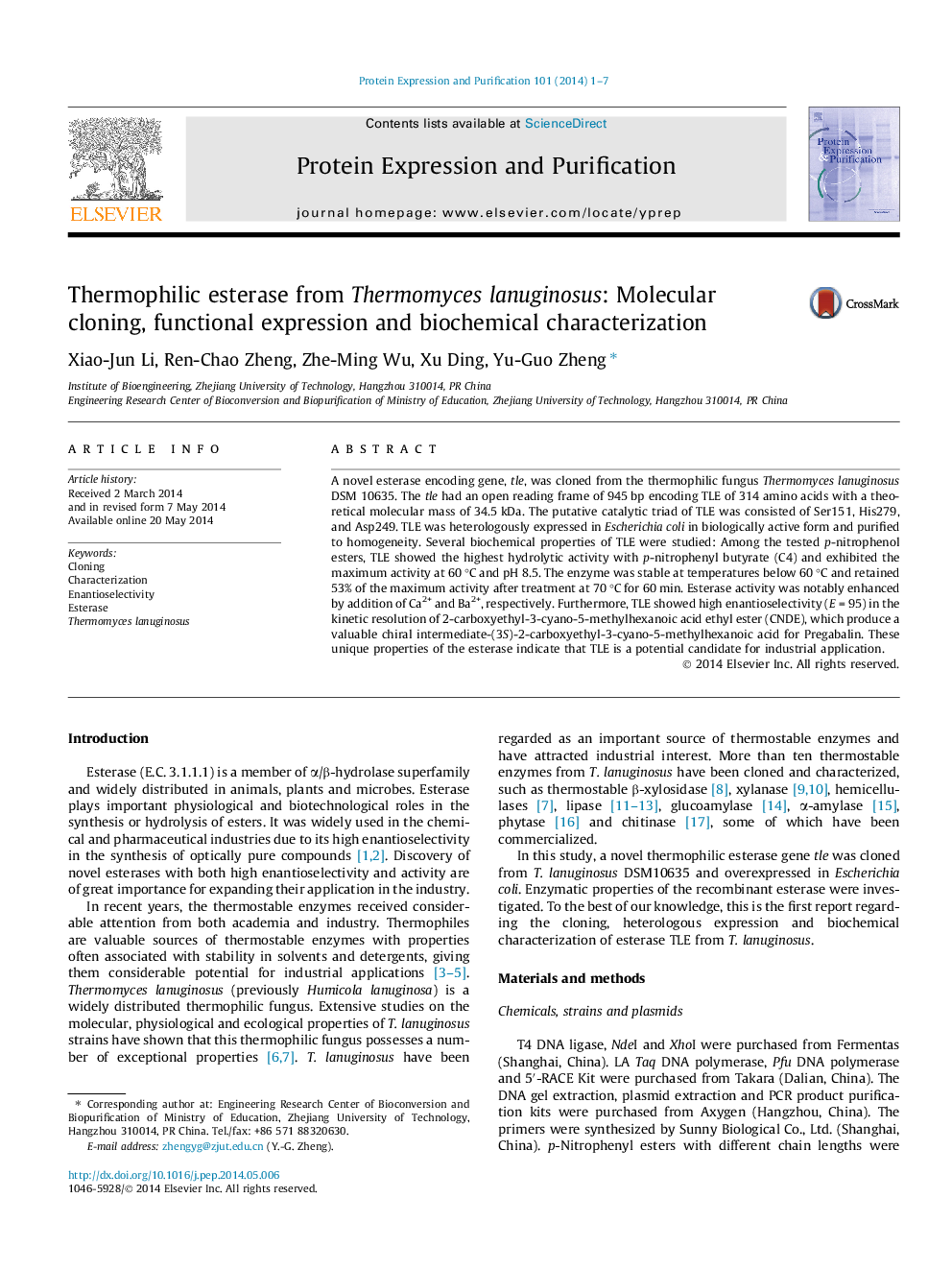| Article ID | Journal | Published Year | Pages | File Type |
|---|---|---|---|---|
| 8360446 | Protein Expression and Purification | 2014 | 7 Pages |
Abstract
A novel esterase encoding gene, tle, was cloned from the thermophilic fungus Thermomyces lanuginosus DSM 10635. The tle had an open reading frame of 945 bp encoding TLE of 314 amino acids with a theoretical molecular mass of 34.5 kDa. The putative catalytic triad of TLE was consisted of Ser151, His279, and Asp249. TLE was heterologously expressed in Escherichia coli in biologically active form and purified to homogeneity. Several biochemical properties of TLE were studied: Among the tested p-nitrophenol esters, TLE showed the highest hydrolytic activity with p-nitrophenyl butyrate (C4) and exhibited the maximum activity at 60 °C and pH 8.5. The enzyme was stable at temperatures below 60 °C and retained 53% of the maximum activity after treatment at 70 °C for 60 min. Esterase activity was notably enhanced by addition of Ca2+ and Ba2+, respectively. Furthermore, TLE showed high enantioselectivity (E = 95) in the kinetic resolution of 2-carboxyethyl-3-cyano-5-methylhexanoic acid ethyl ester (CNDE), which produce a valuable chiral intermediate-(3S)-2-carboxyethyl-3-cyano-5-methylhexanoic acid for Pregabalin. These unique properties of the esterase indicate that TLE is a potential candidate for industrial application.
Related Topics
Life Sciences
Biochemistry, Genetics and Molecular Biology
Biochemistry
Authors
Xiao-Jun Li, Ren-Chao Zheng, Zhe-Ming Wu, Xu Ding, Yu-Guo Zheng,
